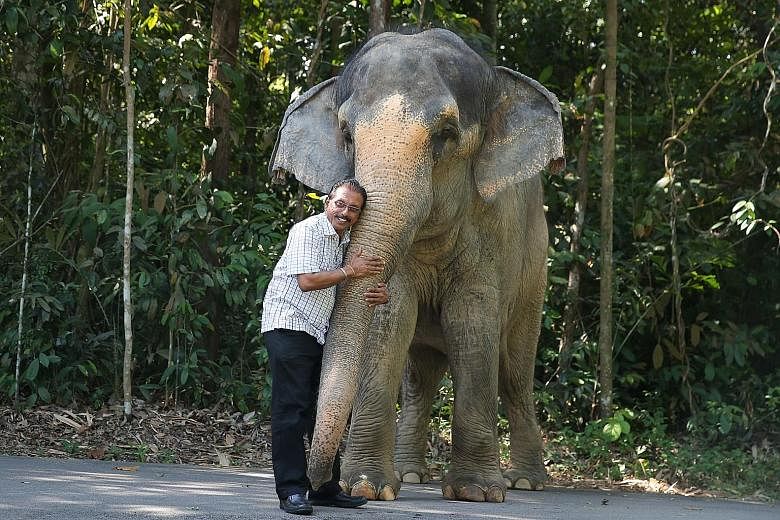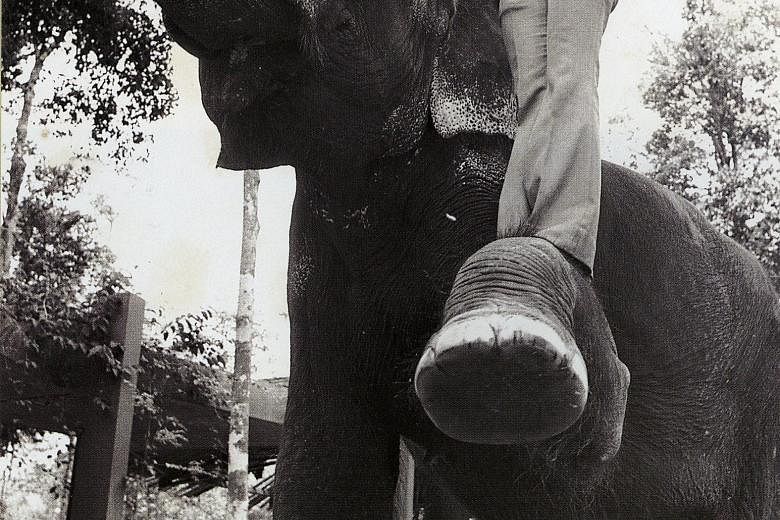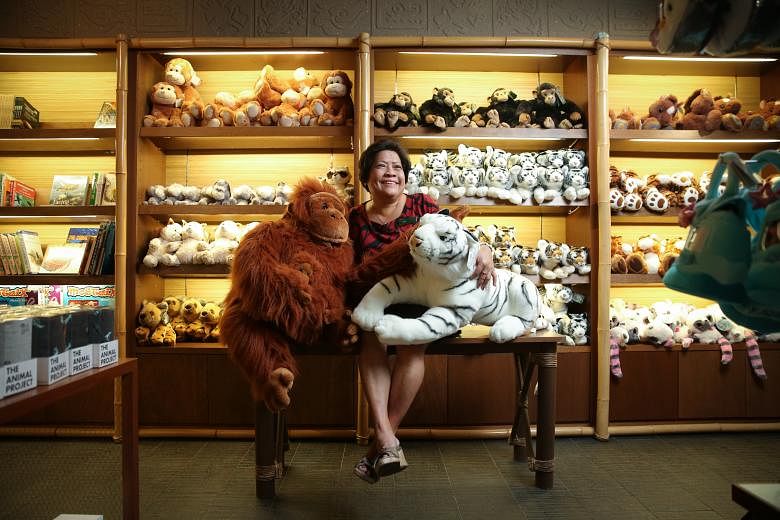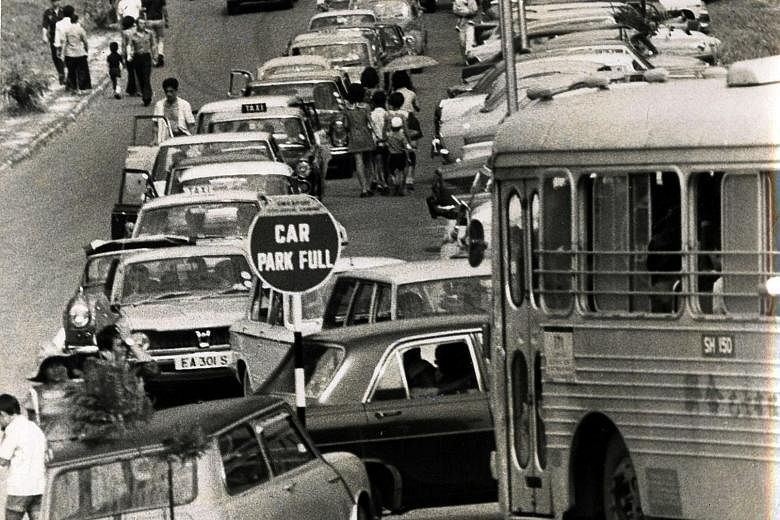An orang utan which got drunk when someone threw it a can of beer. Other apes who smoked cigarettes they were given. A tour guide who asked visitors if they would like to eat one of the ostriches.
When the Singapore Zoological Gardens opened in Mandai, the human behaviour was on the wild side. Few visitors knew about zoo etiquette during the early years of the park, which opened on June 27, 1973, said pioneer zookeeper Kumar Pillai.
Then again, the team of rookies assembled to run the place did not know much about zoos either. Many were untrained, with little knowledge on handling animals.
Four decades on, the zoo has over 80 trained keepers and is an international success story. It is a major tourist drawcard, attracting 1.7 million visitors annually. It was the top zoo in Asia and third globally in TripAdvisor's 2015 Travellers' Choice awards.
Fresh out of national service, Mr Pillai applied to be a volunteer keeper in April 1972 for one reason - to learn how to ride a horse.
"I wanted to be like Clint Eastwood," he said, referring to the macho American actor who starred in cowboy flicks. "I even got myself a sombrero. I didn't come here because I loved animals."
-
ATTRACTIONS MILESTONES
-
• 1875: Early zoo opens at Singapore Botanic Gardens. Many animals are donated, including a sloth bear, an emu, a tiger, two orang utans and a leopard. Zoo closes in 1905.
• 1920-60s: Several other zoos are set up by private individuals, including Tampines Zoo, Ponggol Zoo, and Singapore Miniature Zoo in Pasir Panjang by animal dealer Tong Seng Mun in 1957.
• 1968: The late Dr Goh Keng Swee, then Minister for Finance, has the idea of a recreational bird park in industrial Jurong. Jurong Bird Park opens on Jan 3, 1971.
• March 1972: Government announces $124 million plan to develop Sentosa into a resort island.
• June 27, 1973: Singapore Zoological Gardens opens with 272 animals representing 72 species.• 1974: Congo the hippopotamus escapes and stays in the reservoir for 52 days. This was one of several animal escapes.
• 1982: Breakfast with an orang utan programme begins. Orang utan Ah Meng escapes up a tree and stays there for three days.
• 1987: Annual visitor figures pass the one-million mark for the first time, at 1.1 million.
• May 26, 1994: World's first nocturnal zoo, the Night Safari, opens. It is the brainchild of the then zoo executive chairman, the late Dr Ong Swee Law.
• Dec 10, 1997: Science Centre Singapore opened by Dr Toh Chin Chye, then Minister in Charge of the Science Centre Board.
• Feb 8, 2008: Zoo icon Ah Meng dies of old age. Over 4,000 people attend her funeral.
• April 2014: River-themed wildlife park, the River Safari, opens. Features freshwater animals and two pandas on loan from China, Jia Jia and Kai Kai.
Soon after he became a full-time keeper in late 1972, he was put in charge of a pair of rhinos. After they were released from their barn into their exhibit area the first time, the zoo chairman and founder, Dr Ong Swee Law, set him a task - get them back in the barn.
Unsure of what to do, "I got two colleagues to slowly shoo the rhinos while I opened the door to let them in", said Mr Pillai, now 63 and the director of special projects and development at self-funded organisation Wildlife Reserves Singapore (WRS).
The rhinos slowly made their way to the barn; the plan appeared to work. But suddenly, the male turned and started charging Mr Pillai's colleagues. Horrified, he did the first thing that came to mind: "I ran inside the exhibit and shouted (to the rhino), 'Inside!' And to my surprise, the rhino turned and walked straight into the barn.
"But the second day, it didn't work. That (first) day was a fluke."
Preparations for the zoo's opening had started way in advance. Parts of Mandai's secondary rainforest were cleared and animals were acquired. The first elephant, Anusha, arrived on a steamer from Sri Lanka in January 1973.
Mr Pillai, who later became her keeper, was at the harbour as a crane lifted her to the dock. She was transported to the zoo on a lowbedder, a vehicle used to carry tractors. For the entire journey, she stood on a metal platform with her legs chained down. At each turn, she swayed from side to side.
"I thought she was going to fall off," said Mr Pillai.
It was the bond he developed with Anusha and other elephants that convinced him to stay on at the zoo.
"Oh, you need to work with them," he said of his love for elephants. "It's just the way they respond to you, the way they connect with you, the bond that you build with them. It's a very emotional sort of attachment."
Madam Susie Ng, from the same rookie batch as Mr Pillai, thought she was applying for an office job at the Public Utilities Board (PUB).
But the then 20-year-old found herself at the zoo instead, manning the gift shop and stamping admission tickets - $2 for adults and $1 for children. The price had been set after Mr Pillai wrote - by hand - to various zoos worldwide for input.
On the first Sunday, the crowd numbered 25,000. Visitors parked their cars bumper to bumper along Mandai Lake Road and some walked 3km under the hot sun.
Madam Ng, 62, now an assistant human resource manager at WRS, recalled: "Our souvenir shop was almost wiped out of everything."
The idea of a Singapore Zoo in the catchment forests around the Upper Seletar Reservoir was conceived by Dr Ong, then chairman of PUB, in 1968.
Amid the pioneer team's trial and error approach, it was Dr Ong's management style and the team's "can do" spirit that contributed to the zoo's success, said Mr Pillai.





